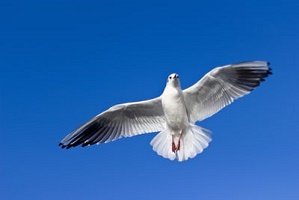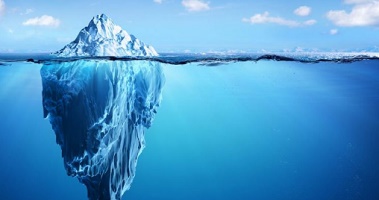What are reptiles?
We explain what reptiles are, their characteristics and the types of reptiles that exist. How is its reproduction and digestive system.
What are reptiles?
We call reptiles a group of quadruped and vertebrate animals , of cold blood, whose main characteristic is to have a skin covered with keratin scales . They are very abundant animals, especially in warm habitats , whose name comes from their way of walking: it comes from the Latin reptile , “that creeps”.
Reptiles appeared on Earth 318 million years ago and were the predominant way of life during the Mesozoic (Triassic, Jurassic, Cretaceous), in the so-called “Age of Dinosaurs.” They are evolutionarily related to amphibians and birds; and some prehistoric reptilian species gave rise to the first mammals.
In human cultures , reptiles have a fascinating and frightening presence , given their dry, millenary appearance, and their ferocity in the case of large predators such as crocodiles, alligators and snakes. Many have been associated with sinister powers or demonic entities, such as the famous snake case in the Garden of Eden narrated in the Bible.
Reptile characteristics

Reptiles, in broad strokes, have adapted to terrestrial life, although many species have subsequently returned to aquatic environments to prey. This means that they have pulmonary respiration, with a double circulatory system and a series of adaptations that allow them to conserve water as much as possible. Its flaky skin is tough and rough, and allows them to warm the body by exposing it to the sun, since reptiles cannot internally regulate body temperature.
Their bodies are generally quadruped, although some species have lost their legs , such as snakes, and others have a rigid shell integrated into the skeleton (such as turtles). They generally have a good sense of smell and in the case of snakes a sense of touch that allows them to perceive vibrations from the ground.
Most reptiles have adapted to life on land, but some have finally been found to live in water. A tough, scaly skin is one of its adaptations. Other adaptations that have contributed to the success of reptiles on land include well-developed lungs, a dual-circuit circulatory system, a water-conserving excretory system, strong limbs, internal fertilization, and shell eggs. In addition, reptiles can control their body temperature by changing places.
Body temperature control
The ability to control their body temperature is a huge advantage for active animals. The animals we have talked about so far are ectothermic. Ectotherms use behavior to control body temperature. To warm up, they lie in the sun all day. To cool off, they move into the shade, swim, or take refuge in underground burrows.
Food
Most reptiles are carnivores and have a short and simple digestive tract, as meat is quite simple to break down and digest. The digestion is slower than in mammals , reflecting its slow metabolism during rest and inability to divide and chew your food. This metabolism has very low energy requirements, allowing large reptiles, such as crocodiles and large constrictor snakes, to live off a large meal for months, slowly digesting large prey.
Herbivorous reptiles, on the other hand, have the same chewing problems as herbivorous mammals, but, lacking the complex teeth that the latter possess, reptiles swallow rocks and stones (called gastroliths ) to facilitate digestion: the rocks are washed in the stomach, helping to grind plant matter. Sea turtles , crocodiles, and marine iguanas also use gastroliths as ballast , which helps them dive.
Breathing
The lungs of reptiles are spongy and have a greater surface area for gas exchange than amphibians . This is because most reptiles cannot exchange gases through their skin, as most wet-skinned amphibians do. Many reptiles have muscles that surround the ribs and expand the thoracic cavity to inhale, or collapse the cavity to exhale. Several species of crocodiles also have cutaneous folds that separate the mouth from the nasal passages; this is how they breathe through their nostrils while their mouths are open. To exchange gases with the environment, reptiles have two functional lungs or, in the case of certain species of snakes, only one.
Circulatory system
Reptiles have an efficient double-circuit circulatory system . One of the routes carries and collects blood from the lungs. The other route carries and collects blood from the rest of the body. The reptilian heart contains two atria and one or two ventricles . Most reptiles have a single ventricle with a partial septum; allows oxygenated blood to be separated from non-oxygenated blood during the pumping cycle. Crocodiles and alligators have the best developed hearts among modern reptiles, as they are composed of two atria and two ventricles, a conformation that also exists in birds and mammals.
Excretion
Urine is produced in the kidneys. In some reptiles, urine flows through tubes directly into a cloaca similar to that of amphibians. In other cases, the urinary bladder stores urine before it is eliminated through the cloaca. Reptile urine contains ammonia or uric acid. Reptiles that live primarily in water, such as crocodiles and alligators, excrete most of their nitrogenous waste in the form of ammonia, a toxic compound. Alligators and crocodiles drink a lot of water, and this dilutes the ammonia in the urine and helps to expel it. In contrast, many other reptiles, especially those that live exclusively on land, do not excrete ammonia directly; They convert ammonia into a compound called uric acid. Uric acid is much less toxic than ammonia, so you don’t need to dilute it too much. In these reptiles, excess water is absorbed into the cloaca and turns the urine into uric acid crystals that form a white, pasty solid. Because they dispose of wastes that contain little fluid, reptiles can conserve water.
Anatomy and morphology
The basic pattern of the brain of a reptile is similar to that of an amphibian, although the brain and cerebellum are considerably larger compared to the rest of the brain mass. Reptiles that are active during the day tend to have complex eyes and can perceive colors well. Many snakes also have an excellent sense of smell. In addition to the nostrils, most reptiles have a pair of sensory organs on the roof of the mouth, which can detect the presence of chemicals when the reptile sticks its tongue out. Reptiles have simple ears with an outer ear drum and a single bone that conducts sound to the inner ear. Snakes can also pick up vibrations from the ground. Compared to many amphibians, legged reptiles tend to have larger, stronger limbs that allow them to walk, run, dig, swim, or climb. Also, the legs of some reptiles are lower than the body than amphibians, allowing them to be heavier. As in amphibians, the spine of reptiles helps with much of the movement.
Types of reptiles
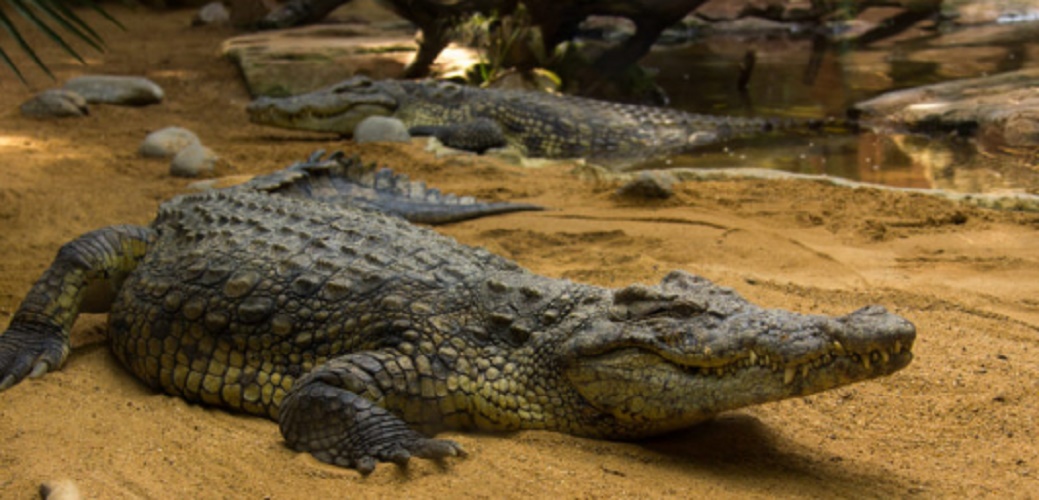
There are four large sets of reptiles:
- Turtles ( testudines ). adapted to aquatic and / or terrestrial habitats , they have a rigid shell that is born from the endoskeleton itself and protects the animal’s torso. They have a corneal peak in the mouth and a small tail, as well as four legs.
- Scaled lizards ( squamata ). as lizards and snakes, which may or may not have legs, respectively, and have long bodies covered with thick and rough scales, which provide them with protection and prevent drying out of the body.
- Alligators and crocodiles ( crocodylia ). terrestrial but of aquatic eating habits, they are some of the fiercest reptilian predators of the African and American continents, thanks to its huge serrated jaw and robust muscular bodies.
- Tutataras ( rhynchocephalia ). a group of living fossils that today includes a single genus, Sphenodon , of three species, endemic to New Zealand. It is about 70cm long reptiles and very evolutionarily close to dinosaurs.
Reproduction of reptiles
The reproduction of reptiles is sexual , that is, it involves the internal fertilization of the female by the male during intercourse, as well as the exchange of gametes (sex cells). Subsequently, the female lays eggs, usually in a nest that shelters fiercely, or buried near water (such as turtles). From them emerge the pups, identical to their parents but smaller, without the need for metamorphosis of any kind.
Digestive system of reptiles
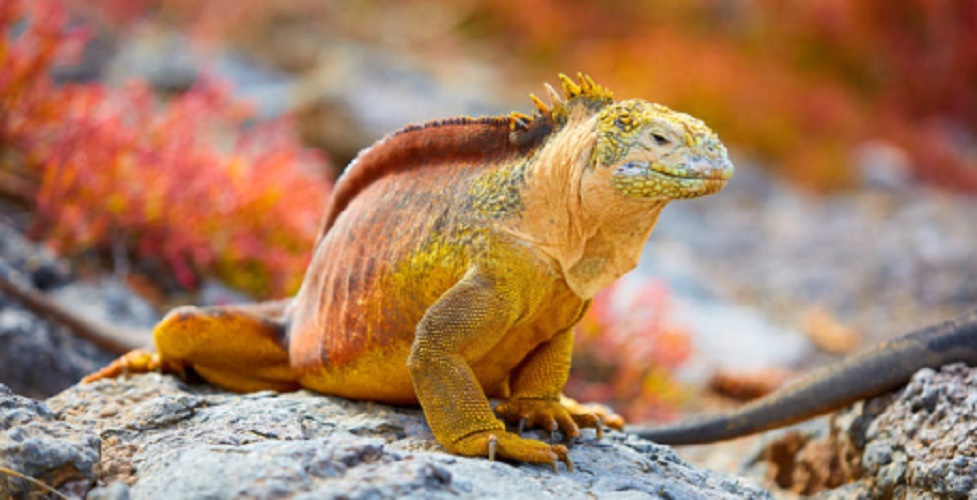
Reptiles have a simple and short digestive system , which is adapted for the decomposition of meat, since they are mostly predators. Their digestion is however much slower than in mammals , partly because they are unable to chew the food and must swallow it in large pieces (or complete in the case of boas), so it is usual to see them sleep or rest after feeding.
There are also herbivorous reptiles , of course, that in the absence of the possibility of chewing, they swallow stones with which to grind devoured food , just as birds do. In addition, these rocks serve marine ballast species, facilitating immersion.
The dinosaurs
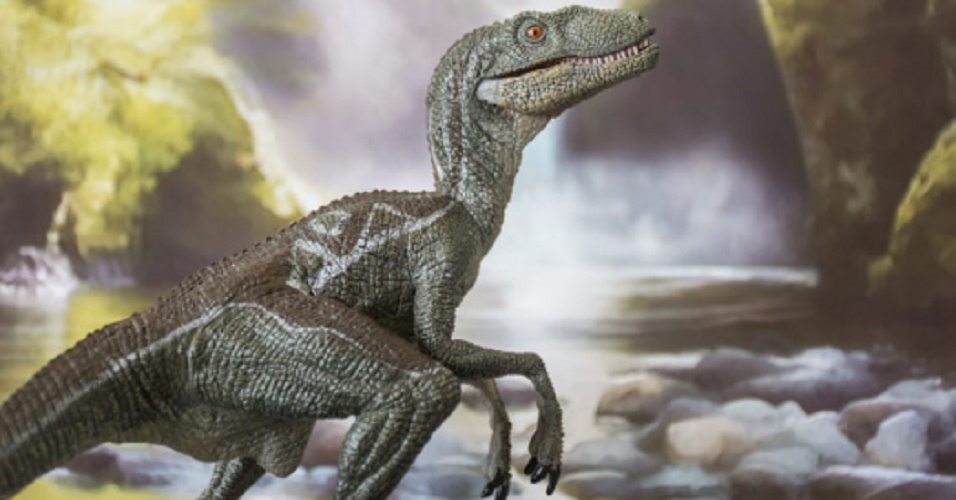
During the Mesozoic Era, some 251 million years ago, reptiles dominated the land and were the dominant group, acquiring a huge size and diversification never before seen (nor after). These large reptiles existed for almost 200 million years until they became extinct in the transition from the Cretaceous period to the Cenozoic Era, 65 million years ago, for reasons unknown, but whose evidence points to a global catastrophe. Of these creatures were only fossil records, which when discovered by mankind were called dinosaurs , that is, “terrible lizards” in Latin.
Reptiles in danger of extinction

Numerous reptilian species are today at risk of disappearing by the action of the human being . Among them, the following stand out:
- Dwarf Chameleon ( Bradypodion taeniabronchum ). Tiny version of the ordinary chameleons, native to South Africa.
- Ricord iguana ( Cyclura Ricordi ). Endemic to the island of Hispaniola, in the Caribbean, there are few populations left in the southwest of the Dominican Republic.
- Giant Lizard of La Palma ( Gallotia auaritae ). endemic to the Canary Islands, it has been extinct since humans colonized the island of La Palma, due to the introduction of cats, agriculture and indiscriminate hunting.
- Cayman of the Orinoco ( Crocodylus intermedius ). It is the largest predator in Latin America, endemic to the Orinoco River region in Venezuela. It has a maximum length of 7 meters and is in critical danger of extinction.
- Hawksbill Turtle ( Eretmochelys imbricata ). It is a species of sea turtle with a mottled body and whose flesh and shells are highly coveted, which is why they have been hunted until practically extinction.
- Chinese crocodile ( Alligator sinensis ). Endemic to the mouths of the Yangtze River in China, it is dark green reaching black, and lives about 40 years.
Reptile examples

A perfect example of reptiles are the water turtles that many of us had as children as a pet ( Trachemys scripta ), as well as the common iguanas ( Iguana iguana ) that in many tropical countries can be seen roaming the countryside or even some cities . Also the Iranian crocodiles ( Crocodylus palustris ) of the zoos, the green anacondas of the Amazon ( Eunectes murinus ) or the homemade lizards or geckos ( Hemidactylus mabouia ) that we can find climbing to the walls of American homes.

